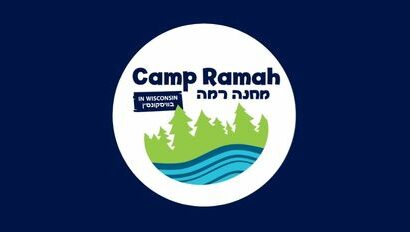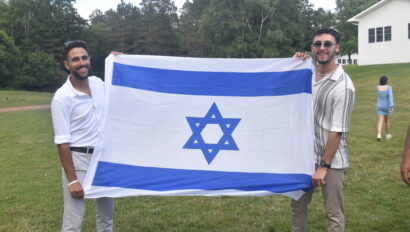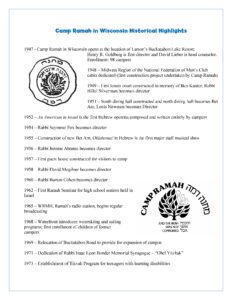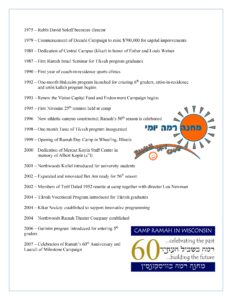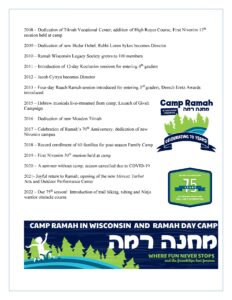Yom Kippur: A Time for Personal Accountability, Introspection, and Joy
In its original, Biblical context, Yom Kippur had little to do with individual Israelites. It is clear from the context of the beginning of Parashat Achrei Mot (Leviticus, Chapter 16) that the ritual of Yom Kippur (we read this section from the Torah on Yom Kippur morning) is an attempt to cleanse and rededicate the Tabernacle after the death of Aaron’s sons Nadav and Avihu inside it. Biblical scholars, perhaps most notably the late Professor Jacob Milgrom (z"l), suggest that the original context of most of that chapter was as a cleansing ritual whenever the sanctuary was defiled and that only later were the final verses which affix the ritual to an annual rite on the 10th of Tishrei added.
In this telling, the Biblical Yom Kippur was a day that made perfect sense for Biblical Judaism: it focused on the Kohanim and Levi’im, genetic inheritors of their special places in the religion, effecting actions over which the great mass of people had little influence or control.
As the religion developed in the later centuries of the Second Temple Period into the first stages of what would become our Judaism, Yom Kippur changed as well. As Judaism’s elite moved from a familial aristocracy to a scholarly meritocracy (the Rabbis) and the ritual came to be more focused on individual practice (prayer, following mitzvot) than on institutional ritual (sacrifice), Yom Kippur shifted away from a ritual done by a few select members of the priesthood to a holiday built upon individual behavior (abstaining from sensual enjoyment including eating, bathing, and marital relations) and introspection. The Mishnaic tractate devoted to Yom Kippur marks this transition, as the first seven chapters recount the Priestly ritual of the Temple and the final eighth chapter (likely written last) introduces the now central concept of interpersonal forgiveness and personal introspection – t’shuvah.
Today we live in a world that is ever-more defined by personal agency and choice, one that could hardly be imagined by the rabbinic architects of Yom Kippur who developed the framework for our current observance and then added (and added) layers of metaphor and poetry over the centuries. Often, our first instinct when confronted with Yom Kippur is to long for the original paradigm: How much easier would it be for a few priests to enact a ritual after which God would wipe our communal slate clean?
Easier – perhaps, but with minimal investment we can reap only minimal rewards. It is our individuality and our commitment to introspection that allows us to embark on our journeys through life, to improve ourselves and our world, to set goals and evaluate our progress on them. This is a lesson that infuses our work at Ramah, on an institutional level and an individual one. This time of year we invest significantly in examining each detail of last summer, reading carefully through program evaluations our supervisory staff prepares with analysis of the past season and ideas for the future. We field calls from parents, professional colleagues, foundations, and staff members with feedback on the past and visions for what could be. On a more micro level, the summer itself is structured with goal-setting conversations at the beginning of camp, ongoing follow-up throughout the summer, and then summary reflections at the end of camp. One of the great rhythms of the summer is realized watching counselors and campers take walks together on the first Shabbat and the last, dreaming and reflecting about the years to come and those behind us, possibilities and realities, hopes and achievements.
As we embrace our modern world of choice, we must also embrace our responsibility to craft our paths through thoughtful decision-making, deliberate choices, strategic planning in our own lives and for the institutions and communities with whom we have thrown in our lot.
And let us not forget, during this High Holy Day season, as we are overwhelmed by the sheer amount of words and by the tasks at hand, by the soaring language, endless metaphors for our relationship with God, awareness of our own and others’ mortality, standing up and sitting down, and acrostic after acrostic, that just as our summers at Ramah are framed and improved by introspection but not defined by them, that Rosh Hashanah and Yom Kippur are also great days of joy and fun. We are meant to rejoice in thanks to the God who has given us another year with our families and loved ones, to leave our own marks on this world, to cultivate meaningful relationships and communities. Joy too – exuberant individual and communal expressions of awe – are as crucial to the endeavor as chesbon hanefesh, a serious internal accounting of our lives.
May you, your families, friends, and communities, be signed and sealed for a year of blessing, of health, of prosperity, and more.
Shanah Tovah, Shabbat Shalom, and G’mar Chatimah Tovah.
